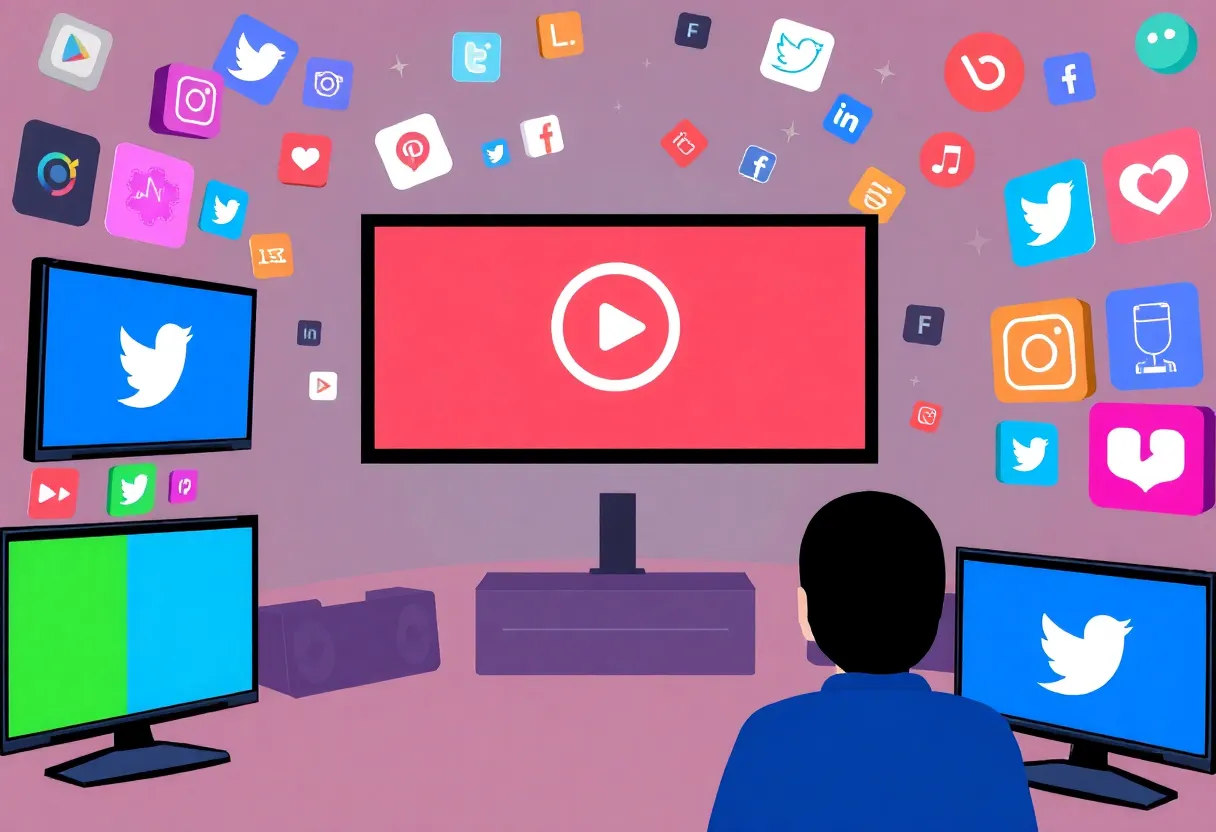News Summary
As the average individual spends six hours daily on media, the competition for attention is heating up. Advertisements are shifting from traditional media to social platforms, with pay TV subscriptions declining significantly. Reasons include rising costs and the demand for more engaging content. Younger audiences especially favor streaming services due to lower prices and better recommendations from social media. This article delves into the evolving dynamics of media consumption.
Streaming Services vs. Social Media: The New Battleground for Our Attention
Have you ever wondered how much time we spend on media and entertainment? It might surprise you to learn that the average person devotes a whopping six hours each day to this activity! This figure seems to have plateaued, as experts believe we won’t be adding extra time anytime soon. With so much of our day dedicated to media, the competition for our attention is more intense than ever.
The Shift in Advertising Dollars
It’s no secret that media companies and advertisers are jostling for a piece of the massive U.S. ad spending pie. Interestingly, a substantial portion of these funds is migrating towards social video platforms. These platforms not only feature an impressive range of free content but also employ advanced advertising technology that traditional studios are struggling to match. As a result, audiences are increasingly turning away from cable and satellite TV in favor of these more dynamic options.
Declining Pay TV Subscriptions
One telling sign of this trend is the recent drop in pay TV subscriptions, which have plummeted from 63% to 49% in just a few years. This shift reveals a clear change in consumer preferences towards Streaming Video on Demand (SVOD) and social platforms. Younger generations are particularly affected by this trend, with 23% of Generation Z and 18% of millennials planning to ditch their cable subscriptions within the next year. Why? The costs can be significantly higher compared to SVOD services.
Financial Priorities Driving Change
With the median household income hovering around $80,000 in the U.S., it’s no surprise that consumers are starting to prioritize essential spending over discretionary media subscriptions. This economic strain is pushing many to rethink their entertainment choices.
Rising Costs for Studios
For studios, the rising production and marketing costs are prompting them to explore innovative bundling strategies and collaborations. This is their way of attracting viewers while also aiming to lower prices, a move designed to keep subscribers hooked. However, it’s no easy feat when they’re up against SVOD services and social platforms that are consistently providing more engaging content and top-notch storytelling.
Frustration with Cable Services
Cable and satellite TV services are feeling the heat, as most subscribers are expressing their frustration over high prices and ad saturation. To put things into perspective, the average monthly bill for cable can be around $125, compared to approximately $69 for four paid streaming services combined. It’s easy to see why many are opting for the latter!
Consumer Perspectives on Value
Despite the plethora of options, many consumers are not completely satisfied. Recent research indicates a decline in perceived value among SVOD services, with 41% of users feeling the offerings aren’t worth the cost—up five percentage points from last year. This dissatisfaction is contributing to high churn rates among subscription services, currently sitting at an alarming 39%.
The Emerging Trend of Ad-Supported Services
As a response to these trends, streaming services are increasingly considering ad-supported tier options to lure in subscribers. In fact, more than half of SVOD subscribers are now taking advantage of these ad-supported services, demonstrating an increase of eight points from the previous year.
The Influence of Social Media
The role of social media cannot be understated, particularly among younger audiences. Advertisements on these platforms seem to resonate better with Generation Z and millennials, who often find them more relevant compared to traditional media ads. Many even find that they receive superior recommendations for media content through social channels versus SVOD services.
The Future of Media Consumption
Overall, the landscape of media consumption is undergoing a significant transformation. Traditional media companies are navigating this shifting terrain, grappling with soaring production costs while desperately trying to innovate against more agile social platforms. If you’re a media consumer, it’s essential to stay tuned for these exciting developments in how we consume our favorite content.
Deeper Dive: News & Info About This Topic
HERE Resources
Water Main Break Causes Disruption in Lexington
Exciting Digital Marketing Trends to Watch for in 2025
Biden Reflects on Misinformation and Infrastructure Issues
Columbia Residents Under Boil Water Advisory After Main Break
Boil Water Advisory Issued for Columbia Residents
Latest Digital Marketing Strategies for Real Estate Companies in 2021
Additional Resources
- Deloitte: United States Economic Outlook Analysis
- Wikipedia: Social Media
- Deloitte: 2025 Digital Media Trends
- Google Search: Digital Media Trends
- Deloitte: Thriving in Leadership Tension and Uncertainty
- Encyclopedia Britannica: Streaming Media
- Deloitte: Closing the Experience Gap
- Google News: Streaming Services Competition









